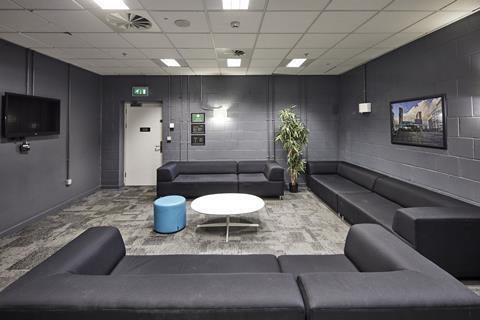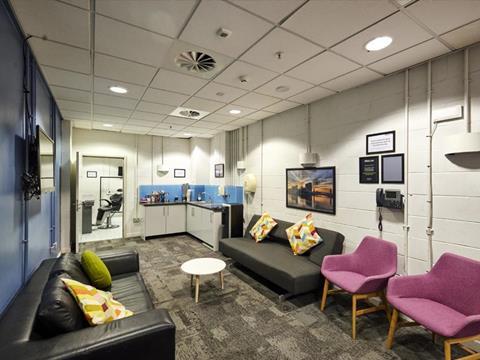Danny Owens, client services coordinator at dock10, takes a look at one of the most well known terms in the industry

If you’ve ever had the pleasure of appearing or crewing on stage, on TV or radio, or even slogging around the nation’s less glamourous clubs and bars as a member of a band or aspiring stand-up comic, you’ve probably spent at least some of your life in a ‘green room.’
Chances are that on most of these occasions the space you occupied at least roughly qualified as a room, but there’s also a high probability that on very few such occasions was the room actually green.
The term is nonetheless ever-present, and it is almost unthinkable that a performer would spend any time ahead of their moment in the spotlight in a room described as any colour but green – even if the room itself turns out not to be literally green at all.
So where did this term actually come from?
The earliest reference to a green room we could find came in William J Lawrence’s theatrical history Old Theatre Days and Ways, which references a room in London’s Blackfriars Theatre where actors would wait to go onstage. The room was indeed painted green, though history does not tell us why, and dates back to at least 1599.
A marginally more recent example can be found in Darryl Grantley’s Historical Dictionary of British Theatre, which highlights a 1662 renovation of the capital’s Cockpit-in-Court Theatre featuring a green baize dressing room for performers.
The term certainly has history, but why green?
Well, keeping things entirely straightforward, green has long been considered a ‘relaxing’ colour. A 2019 Frontiers in Psychology study published by the US National Library of Medicine stated that “walking in a green environment induced a significant reduction in heart rate values as compared to red and white conditions,” corroborating “the calming and relaxing effect of green on the human organism.”
Elsewhere, Preston-based psychologist Lee Chambers told a 2020 Femail study on the psychology of colour that green is the “universal colour of growth and serenity” and “suggests you’re open to training and learning, and have a calm disposition.”
It stands to reason then that a green environment might be a good one in which to relax before stepping on stage in front of a potentially baying mob of ticket-buying customers.

But green isn’t the only relaxing colour – just check the pages of any lifestyle mag to learn that blues can calm us, yellows and oranges exude happiness, and even a neutral beige or white will prevent any major incidents next time we have a bathroom reboot. Is there more to the all-powerful prevalence of green in the backstage rooms of the entertainment industry?
There are a number of possible historical precedents for the selection of green over the wealth of other, possibly equally relaxing, colours. Most are circumstantial at best.
Harking back to medieval street theatre – the traditions of the mummers in England or the giullari in Italy, for example – a performance would traditionally take place on a village green that onlookers would crowd around, giving a long-established link between the concept of ‘green’ and performance.
Other suggestions point towards the ‘limelight’ – possibly worthy of an explanatory story by itself – which would see early stages lit by burning calcium oxide, aka quicklime, in the days before roof grids, 20,000-channel lighting desks and health and safety risk assessments. Green, goes the theory, was a calming colour for the eyes after the searing glare of burning chemicals.
Another possible explanation, espoused by TheatreCraft’s Glossary of Technical Theatre Terms, can be found in the earliest days of stage make up, when the woad-like substance applied to actors’ faces would take time to set, and was basically green as they sat in an off-stage room until it did. Mel Gibson and the Braveheart cast would have us believe woad was blue, but nothing is impossible.
Yet another theory relates to the green and red lights that will be familiar to anyone using a TV studio – green denoting that you can frolic at will and do your thing, and red meaning you need to shut up as recording is taking place. It’s a nice idea, but given the fact that the use of the term ‘green room’ was first recorded over 400 years ago we’re not entirely buying into that one.
A further, much more literal, explanation lies in the colour of nervous actors’ faces as they await their moment in the spotlight, green being a colour traditionally associated with nausea and trepidation.
We may never know the exact origin and etymology of the term green room for sure, but what we can be certain of is that – unlike Henry Ford’s famous Model T – you can have it in any colour you want including, but not limited to, green.

Danny Owens is client services coordinator at dock10





No comments yet